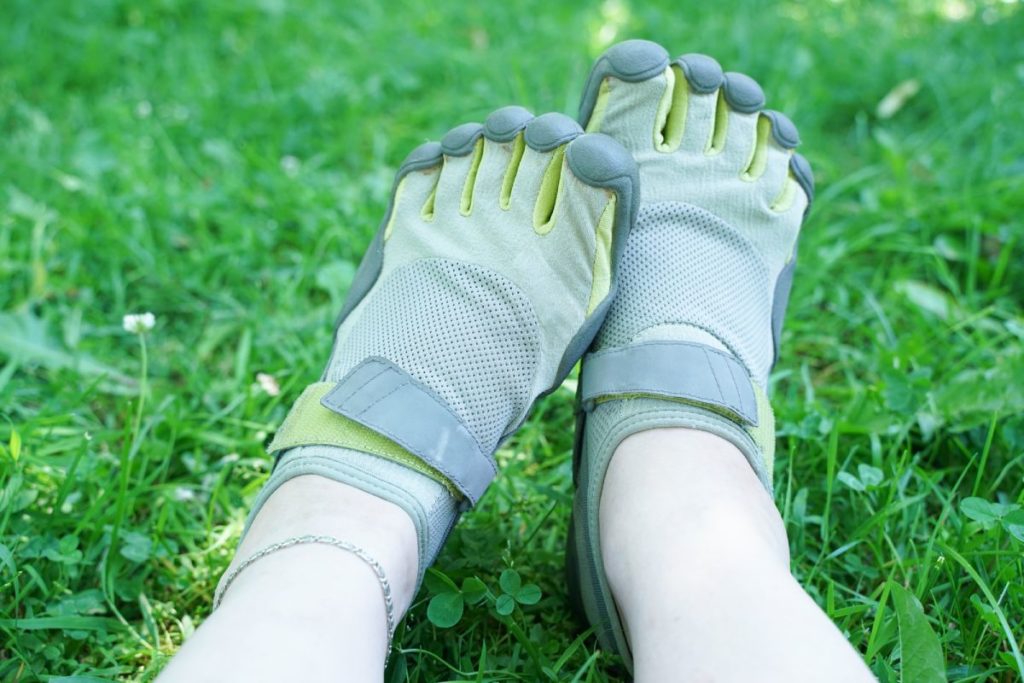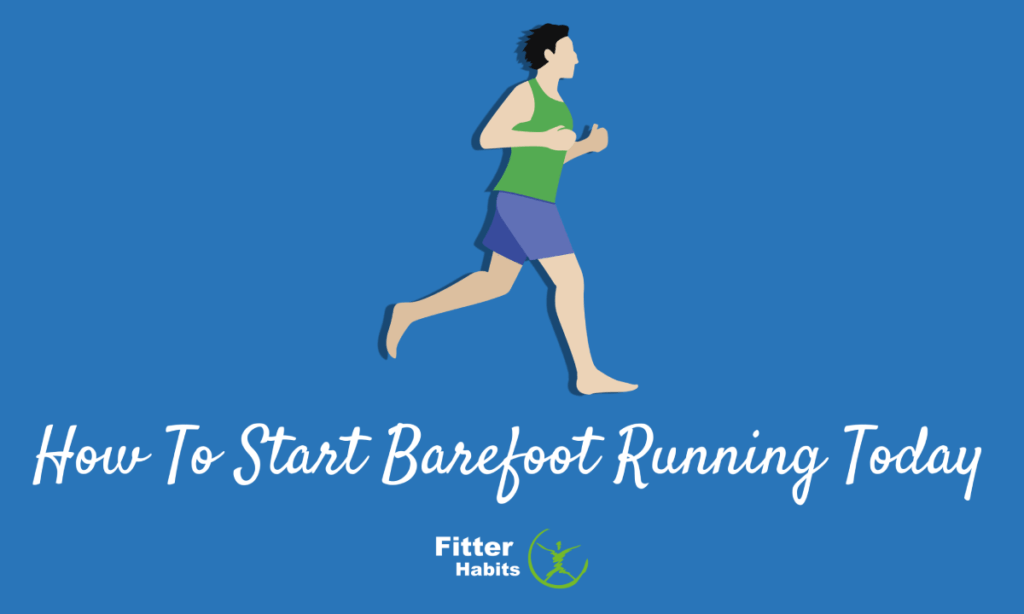Are you wondering how to start barefoot running? Do you want to take advantage of minimalist running shoes? Learn more about this process below!
Do you want to prevent injuries as you run? If so, you may want to run naturally and learn how to start barefoot running.
As I was researching ways to run naturally, I came across barefoot running. Now, this isn’t actually running “barefoot,” but it does focus on running with a different set of running shoes that more closely mimic the natural movement of your foot.
Traditional cushioned shoes are designed to absorb shock and improve comfort. Minimalist running shoes are focused more on helping you develop a more natural running gait while increasing your feel for the terrain.
So, what is barefoot running? What are minimalist running shoes? If you are interested in transitioning to this style of running, what do you need to keep in mind?
Contents
What Are Minimalist Running Shoes?

When compared to traditional running shoes, minimalist running shoes, such as Vibram Five Fingers, are designed to mimic the way we move our feet when we run barefoot. Furthermore, minimalist running shoes still provide some degree of protection from rocks, dirt, and other hazards that are present on the terrain.
These types of running shoes have minimal amounts of cushioning, particularly in the middle of the shoe. These shoes also lack beefy heel cushioning.
In addition, the heel-to-toe drop of traditional running shoes is approximately 10 mm which means that they have an extra 10 mm of cushioning underneath the heel when compared to the toes. In contrast, minimalist shoes usually have a heel drop of less than 8 mm.
Some running shoes have no drop at all. These are referred to as zero drop shoes, meaning that your heel and toes are at the same level when you run in them.
What Are the Benefits of Running in Minimal Shoes?
A few benefits of minimal running shoes include:
- A reduction in the impact of your gait: Because there is a lower heel-to-toe drop with these shoes, you will land closer to the middle of your foot or front of your foot instead of your heel. As a result, you may reduce the impact of your heel strike. If you would like to learn how to run with a midfoot strike or forefoot strike (at the ball of your foot) instead of heel striking, these shoes can help you do exactly that.
- Improve your sensation of the terrain: Because there is not as much cushioning with minimalist shoes, you will improve your connection to the ground underneath your foot. If you are more in touch with your terrain, you will improve your proprioception. This means that your body will naturally adjust its running mechanics to meet the demands of the terrain.
- Lighten your running shoes: The vast majority of these shoes are significantly lighter than traditional running shoes. Therefore, you will not require as much power from your legs to lift your feet off the ground. It will take less energy with every step, helping you run faster and farther.
You may notice a lot of these benefits immediately, but you do have to be careful that you do not hurt yourself. If you alter your gait when you run in minimalist shoes, you may put more stress on your Achilles tendon. This can increase your chances of suffering an injury.
Finally, if you are someone who has flat feet, hammertoes, plantar fasciitis, pain in your calf muscles, blisters, or active bunions, these running shoes may not be right for you, as they could increase your injury risk. If you are thinking about switching to minimal running shoes, you may want to meet with your doctor to see if they are right for you. You may need more arch support to keep you injury-free.
Our guide on do you wear socks with barefoot running might be useful.
How Can You Choose the Right Minimalist Shoes?
If you are wondering how to choose the right barefoot shoes for you, there are several factors to consider. These include:
- The Terrain: Running on the road and running on trails offer very different terrain. Therefore, you need to find minimalist footwear that is designed specifically for either trails or the road. That way, you have the right stability and support as you run.
- The Cushion: You should also consider how much cushioning you require. Switching from a traditional running shoe to a minimalist shoe with no cushion can be an abrupt switch. This may be something that you want to do gradually.
- The Size: You need to find a shoe that fits well. Unlike traditional running shoes, you should not have to break in minimalist shoes. Your shoes should fit perfectly from the first time you put them on.
If you keep these factors in mind, you should find the right minimalist shoes for you. You may feel sore the next day after running in minimal shoes on the first time. Give yourself time to deal with this soreness and recover appropriately to reduce your risk of running injuries.
Final Word on How to Start Barefoot Running
If you want to improve your connection with the terrain, improve your running form, and lighten your shoes, then minimalist shoes might be for you. It is true that these shoes can reduce the impact of your running technique, improve your feel for the ground, and increase your endurance; however, you want to make sure you are not putting too much stress on your Achilles tendon. You may want to speak to your doctor before you switch to these shoes.
FAQs About Start Barefoot Running
Do I actually run barefoot with barefoot running?
No. Barefoot runners run in minimalist shoes. This reduces the amount of cushion you have between your feet and the ground.
What should I do if I suffer an Achilles tendon injury?
If you are worried that you have injured your Achilles tendon, you should see a doctor immediately. Achilles tendonitis can take a while to recover from. If you tear your Achilles tendon, you will probably require surgery.



